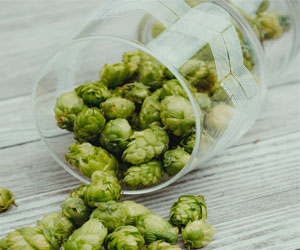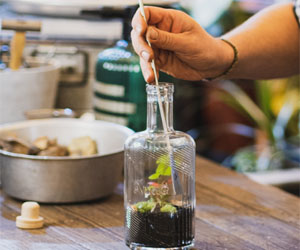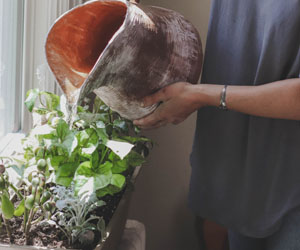


Strategies For Success

In our fast-paced world, demanding schedules have become an almost ubiquitous aspect of modern life. The constant juggle of work, family, personal commitments, and social activities often leaves us feeling overwhelmed and stressed. Meeting the expectations of demanding schedules can be a significant challenge, but it's not insurmountable. In this article, we'll explore the impact of demanding schedules and provide practical strategies to help you navigate them successfully.
The Impact Of Demanding Schedules
Demands on our time and energy can come from various sources, such as work, family, academic pursuits, or personal goals. While it's natural to feel proud of our ability to multitask and meet these demands, it's essential to acknowledge the potential toll demanding schedules can take on our physical and mental well-being.
Stress: Constantly trying to meet tight deadlines and fulfill numerous commitments can lead to elevated stress levels. This stress can, in turn, affect your overall health, including your sleep, immune system, and emotional well-being.
Burnout: A demanding schedule, when not managed properly, can lead to burnout - a state of physical, emotional, and mental exhaustion. Burnout can negatively impact your performance, creativity, and enthusiasm for life.
Health Issues: Neglecting self-care, such as exercise, proper nutrition, and relaxation, can result in various health problems, including weight gain, cardiovascular issues, and mental health challenges.
Strategies For Navigating Demanding Schedules
To tackle the challenges of demanding schedules and maintain a healthy work-life balance, consider implementing the following strategies:
Prioritize Tasks: Start by identifying your most important tasks and responsibilities. Focus on these first and allocate your time accordingly. Use to-do lists or time management apps to help you stay organized.
Set Boundaries: Learn to say no when necessary. It's crucial to establish boundaries that protect your personal time and prevent over-commitment.
Delegate: If possible, delegate tasks to others, whether at work or home. Sharing responsibilities can lighten your load and free up time for more critical activities.
Time Management: Improve your time management skills by setting specific time blocks for various tasks. Avoid multitasking, as it can lead to reduced productivity and increased stress.
Self-Care: Prioritize self-care activities, including regular exercise, healthy eating, adequate sleep, and relaxation techniques. Caring for your physical and mental health is vital in managing the demands of a busy schedule.
Learn To Let Go: Recognize that you can't control everything. Sometimes, unforeseen circumstances or minor imperfections are not worth stressing over.
Seek Support: Share your concerns and challenges with trusted friends, family, or a mental health professional. Talking about your experiences and feelings can provide valuable emotional support and help you find solutions.
Take Breaks: Incorporate short breaks into your daily routine. Even a few minutes of relaxation can help you recharge and refocus.
Time For Hobbies: Dedicate time to hobbies and activities that bring you joy and relaxation. These moments of enjoyment can serve as a buffer against stress.
Reflect And Adjust: Periodically review your schedule and make adjustments as needed. Don't be afraid to reevaluate your priorities and commitments to ensure they align with your long-term goals and well-being.
Managing demanding schedules is a continuous process that requires self-awareness, effective time management, and a commitment to self-care. By implementing these strategies, you can navigate the challenges of a demanding schedule while maintaining your physical and mental well-being. Remember that finding the right balance is an ongoing journey, and it's essential to be flexible and adaptable in your approach to lead a fulfilling and less stressful life.






Nurturing Your Skin And The Planet
 Biodegradable Packaging: Green skincare products are packaged in eco-friendly containers that are either biodegradable or recyclable. These efforts aim to reduce the vast amounts of plastic waste that end up in our oceans and landfills.
Biodegradable Packaging: Green skincare products are packaged in eco-friendly containers that are either biodegradable or recyclable. These efforts aim to reduce the vast amounts of plastic waste that end up in our oceans and landfills.
Transparency: Green skincare brands tend to be more transparent about their ingredients, sourcing, and production methods. This transparency empowers consumers to make informed choices about the products they use.
Toxin-Free Formulas: Many mainstream skincare products contain potentially harmful chemicals, such as parabens, phthalates, and sulfates. Green skincare, on the other hand, avoids these toxins and focuses on safer, more natural alternatives.
Holistic Approach: Green skincare often takes a holistic approach to beauty. It emphasizes that what goes on your skin can affect your overall well-being. It encourages mindfulness about the products you choose and their potential long-term effects.
A Glimpse Into Monastery Brewing
 The Origins Of Monastery Brewing: The roots of monastic brewing can be traced back to medieval Europe, when monasteries were not only centers of spirituality but also hubs of agriculture and craftsmanship. Monks, skilled in cultivation and brewing, often brewed beer to support themselves and their communities. The monastic brewing tradition was born out of necessity and evolved into an art form celebrated for its unique and high-quality beers.
The Origins Of Monastery Brewing: The roots of monastic brewing can be traced back to medieval Europe, when monasteries were not only centers of spirituality but also hubs of agriculture and craftsmanship. Monks, skilled in cultivation and brewing, often brewed beer to support themselves and their communities. The monastic brewing tradition was born out of necessity and evolved into an art form celebrated for its unique and high-quality beers.
Brewing As A Form Of Self-Sufficiency: Monasteries were largely self-sustaining communities, and brewing became a valuable source of income for these religious orders. Monks brewed beer for their own consumption and to trade with neighboring communities. The high-quality beer produced within the monastery walls garnered a reputation for excellence and, over time, became an essential part of monastic life.
Brewing's Role In Monastic Life: For many monastic orders, brewing was not just a means of financial support; it was also deeply entwined with their way of life. Brewing was seen as a form of prayer, a means of connecting with the divine. Monks believed that by perfecting their brewing skills, they were glorifying God and serving their fellow humans through the creation of a sublime beverage.
The Trappist Brewing Tradition: One of the most well-known monastic brewing traditions is that of the Trappist monks, a strict Catholic religious order. Trappist monasteries, especially those in Belgium, have achieved international acclaim for their exceptional ales. Beers like Chimay, Westmalle, and Orval are iconic examples of Trappist brewing, often brewed following centuries-old recipes and using traditional methods.
Preserving Tradition In The Modern Age: While many monasteries have continued to brew their traditional beers for centuries, some have opened their doors to the public, allowing visitors to experience the art of monastic brewing. These monasteries often generate revenue from beer sales and reinvest the profits in charitable endeavors.
Techniques For Discerning Palates
 Clarity: Assess the clarity of the wine. A hazy appearance might indicate issues with the wine's production, while crystal clarity suggests quality and careful handling.
Clarity: Assess the clarity of the wine. A hazy appearance might indicate issues with the wine's production, while crystal clarity suggests quality and careful handling.
Viscosity: Swirl the wine gently in the glass and observe the "legs" or "tears" that form on the side of the glass. Thicker legs indicate a higher alcohol content or residual sugar, which can provide clues about the wine's body.
2. Aroma Exploration: The aroma, or bouquet, of a wine is a critical aspect of the tasting experience. Swirl the wine in your glass to release its aromas, then take a moment to inhale. Wine's bouquet can be quite complex, and it's where the magic begins.
Primary Aromas: Primary aromas are derived from the grape variety itself. For instance, Chardonnay often exhibits scents of green apple or citrus, while Cabernet Sauvignon might have blackberry or black currant notes.
Secondary Aromas: These come from the fermentation process and often include scents like bread, yeast, or vanilla, particularly in the case of oak-aged wines.
Tertiary Aromas: Tertiary aromas develop during aging and might include earthy, spicy, or nutty notes.
3. Sip And Savor: Take a small sip of the wine and let it coat your palate. Assess the wine's taste, noting its flavors, acidity, sweetness, and tannins. Consider the balance and harmony of these elements.
Flavors: Describe the flavors you perceive, which can range from fruity and floral to earthy and spicy.
Acidity: Assess the wine's acidity, which can make it feel crisp and lively on your palate.
Sweetness: Determine the wine's level of sweetness, which can range from bone-dry to dessert-sweet.
Tannins: Note the level of astringency in the wine. Tannins come from grape skins, seeds, and oak aging and can give the wine structure and grip.
A Universal Craft With Unique Flavors
 Asia: The Cradle Of Ceramic Art
Asia: The Cradle Of Ceramic Art
The roots of pottery in Asia run deep, with China often hailed as the birthplace of ceramics. Chinese pottery traditions date back thousands of years, and they have left an indelible mark on the global ceramic landscape. Iconic Chinese porcelain, known for its delicate blue and white designs, is world-renowned. Japanese pottery, on the other hand, is celebrated for its earthy, rustic aesthetics and meticulous craftsmanship. Countries like Korea, Thailand, and Vietnam have their unique ceramic traditions, showcasing the diversity within Asian pottery.
Africa: The Rhythms Of Clay
Across the African continent, pottery is both a functional and artistic tradition. The terracotta pottery of the Nok civilization in Nigeria, dating back to 1000 BC, represents some of the earliest ceramic artifacts in sub-Saharan Africa. In many African cultures, women are the primary potters, carrying on age-old traditions of coiling and hand-building. Each piece reflects the cultural values, motifs, and symbols of the community it hails from.
A Journey Of Craftsmanship And Creativity
 3. Wood Selection: Choosing the right wood is a fundamental step. Different woods have varying characteristics, such as hardness, grain pattern, and color. As a beginner, it's wise to begin with softwoods like pine or cedar due to their ease of workability. Once you gain experience, you can move on to hardwoods like oak, maple, and cherry.
3. Wood Selection: Choosing the right wood is a fundamental step. Different woods have varying characteristics, such as hardness, grain pattern, and color. As a beginner, it's wise to begin with softwoods like pine or cedar due to their ease of workability. Once you gain experience, you can move on to hardwoods like oak, maple, and cherry.
4. Measuring And Marking: Accurate measurements and precise markings are the backbone of woodworking. Learn to use measuring tools, such as tape measures, squares, and calipers. Understand the significance of measuring twice and cutting once, as even minor measurement errors can affect the outcome of your project.
5. Wood Joinery: Wood joinery refers to the methods used to connect pieces of wood together. Basic joint types like butt joints, lap joints, and dowel joints are a good place to start. As you advance, explore more complex joints such as mortise and tenon, dovetail, and finger joints. Proper joinery is essential for strong, stable, and aesthetically pleasing woodworking projects.
Finding Clarity In A Noisy World
 Personal Growth: By contemplating your life and experiences, you can set goals, make plans, and track your progress more effectively. Quiet reflection is a valuable tool for personal development and self-improvement.
Personal Growth: By contemplating your life and experiences, you can set goals, make plans, and track your progress more effectively. Quiet reflection is a valuable tool for personal development and self-improvement.
Now, let's explore how to incorporate quiet reflection into your daily life:
Set Aside Time: Schedule specific time each day for quiet reflection. This could be as brief as a few minutes or longer, depending on your preferences and availability.
Choose A Peaceful Environment: Find a quiet and comfortable place where you won't be disturbed. It might be a corner of your home, a park, or a quiet room in your workplace.
Disconnect: Put away electronic devices during your reflection time. Turn off notifications and resist the urge to check your phone, emails, or social media.
Breathe: Start your reflection with deep, calming breaths. This simple exercise can help you relax and transition into a state of mindfulness.
Elevating Ambiance And Well-Being In Your Space
 Fragrance Selection:The heart of any scented candle design is the fragrance. It sets the tone and evokes specific emotions. Whether you prefer the calming scent of lavender, the invigorating aroma of citrus, or the warmth of vanilla, the choice of fragrance is a crucial step in design. It's about more than just smell; it's about creating an ambiance that resonates with your space and your mood.
Fragrance Selection:The heart of any scented candle design is the fragrance. It sets the tone and evokes specific emotions. Whether you prefer the calming scent of lavender, the invigorating aroma of citrus, or the warmth of vanilla, the choice of fragrance is a crucial step in design. It's about more than just smell; it's about creating an ambiance that resonates with your space and your mood.
Wax And Color: The choice of wax and color is another essential aspect of design. The wax type can influence the candle's texture and burn time. Different colors can evoke different feelings. Soft pastels for a serene atmosphere, bold hues for a dramatic touch, or earthy tones for a cozy and grounded environment. The color should complement the chosen fragrance and the intended ambiance.
Container And Packaging: The vessel that holds the scented candle is more than just a practical element; it's a design statement. Containers come in a variety of shapes, sizes, and materials, from glass jars to tin cans, and even ornate ceramic pots. The packaging, including labels and boxes, can add a layer of elegance and sophistication to the overall design.
Wicks And Flames: The wick's size and type can influence how the candle burns and distributes the fragrance. Double-wicked candles can create a more intense scent release, while single wicks are ideal for a subtler ambiance. The design extends to the flame itself; many scented candles offer an aesthetic touch with wooden wicks that crackle gently as they burn.
The Power Of Scented Candle Design
Scented candle design is more than just aesthetics; it's about curating an experience. Here are some of the ways in which well-designed scented candles can elevate your space and well-being:
Aromatherapy: Scented candles are often used in aromatherapy to enhance relaxation, reduce stress, and promote better sleep. The right design can intensify these therapeutic effects.
Personal Expression: Scented candles can be a means of self-expression. The design allows you to showcase your personal style and create a signature scent for your home.
Exploring Beer Ingredients
 Water may seem unassuming, but it is arguably the most critical ingredient in brewing. Its composition, mineral content, and purity greatly affect the final beer. Different regions with unique water sources contribute to distinct beer styles. For instance, the soft water of Pilsen, Czech Republic, played a pivotal role in the creation of the world-famous Pilsner lager.
Water may seem unassuming, but it is arguably the most critical ingredient in brewing. Its composition, mineral content, and purity greatly affect the final beer. Different regions with unique water sources contribute to distinct beer styles. For instance, the soft water of Pilsen, Czech Republic, played a pivotal role in the creation of the world-famous Pilsner lager.
Malt: The Heart Of The Brew
Malt, typically derived from barley but sometimes wheat, rye, or other grains, serves as the primary source of fermentable sugars in beer. It undergoes a malting process, which involves soaking, germinating, and drying the grain to convert the starches into fermentable sugars. The variety of malt used, the degree of roasting, and the kilning process determine the color, flavor, and body of the beer. Lightly roasted malts contribute to pale lagers, while deeply roasted malts produce rich, dark stouts and porters.
Hops: The Spice Of Beer
Hops are the flowers of the hop plant and provide the bitterness, aroma, and flavor to beer. The bitterness in beer balances the sweetness of the malt, while the aromatic and flavorful qualities create the beer's distinctive taste. The choice of hop variety and the timing of hop additions during brewing greatly influence the final product. Some beer styles, like the hoppy and aromatic India Pale Ale (IPA), showcase the extensive use of hops, while others, like Belgian ales, use hops more conservatively, emphasizing yeast character.
Yeast: The Magical Microorganism
Yeast, the smallest but most vital ingredient, is responsible for fermentation, the process that transforms the sugars in the malt into alcohol and carbon dioxide. Yeast strains vary in their fermentation characteristics, producing different flavors, aromas, and esters in beer. The yeast strain used is a defining factor in the creation of specific beer styles. Ale yeast, with its higher fermentation temperatures, imparts fruity and estery notes, while lager yeast, fermented at cooler temperatures, yields cleaner and crisper flavors.